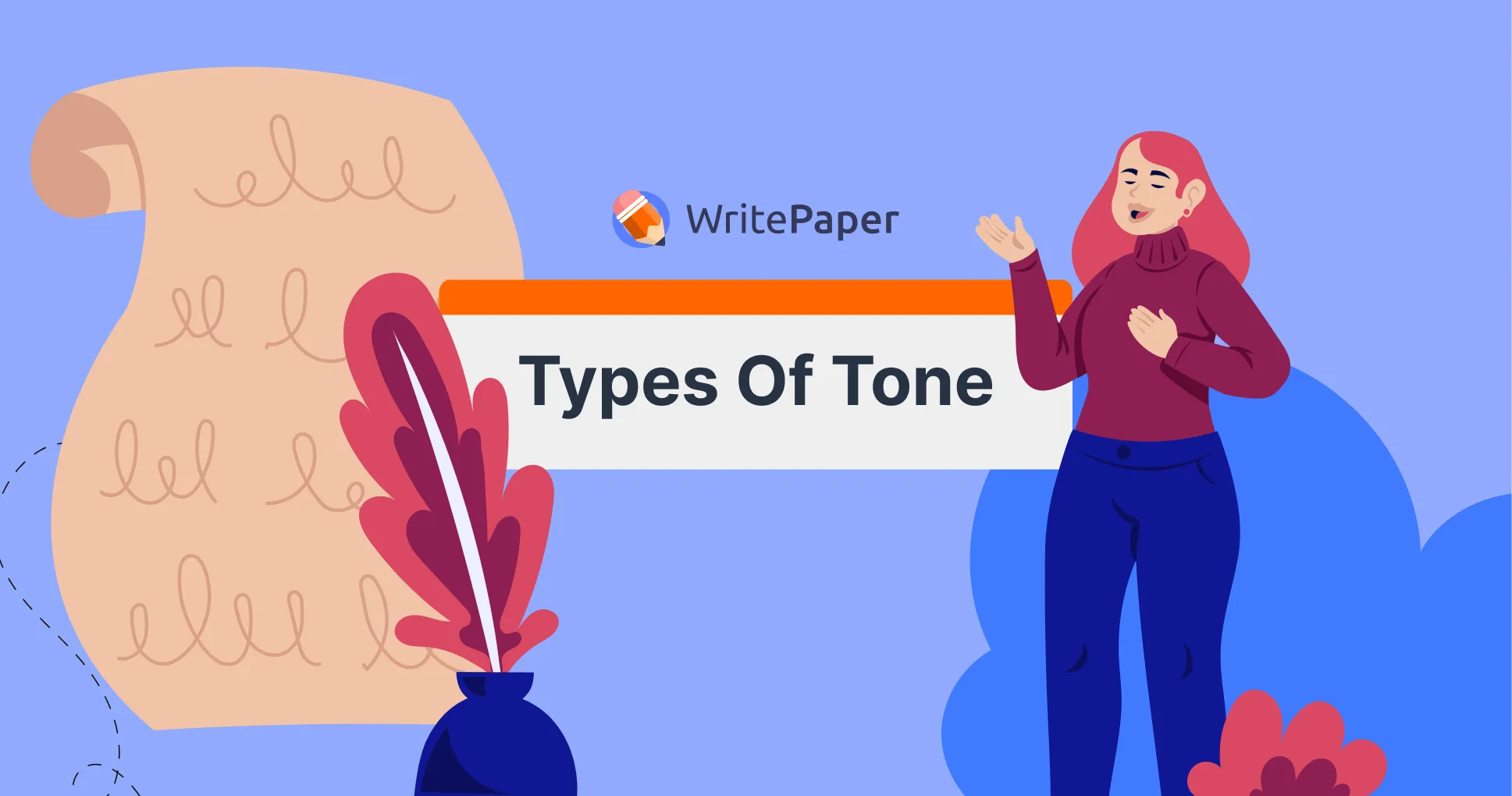Did you know that, on average, college students spend over 12 hours a week researching and writing essays? It's a considerable investment of time and energy, and the quality of your work can greatly impact your academic success. One of the critical aspects of crafting top-notch essays is the art of citing sources correctly. Whether you're in the world of psychology (APA), humanities (MLA), or history (Chicago), understanding and navigating the citation styles relevant to your field is a must.
In this comprehensive article, our will delve deep into the world of academic writing and the crucial role that proper source citation plays in your success. Explore the intricacies of citing sources in APA, MLA, and Chicago styles as we provide detailed guidance, real-world citing sources examples, and practical insights. Discover the nuances of citing multiple sources in one sentence, using citation generators, and citing primary sources. Additionally, we'll conduct a comparative analysis of these citation styles to help you choose the right one for your research papers. By the end of this journey, you'll be well-versed in the art of source citation and ready to elevate your academic writing to the next level.
When to Source Sources in Academic Writing?
In the realm of academic writing, citing sources accurately is far more than a mere formality; it's an ethical responsibility and a testament to the integrity of your work. Proper source citation serves as the foundation of scholarly discourse, ensuring transparency, credibility, and respect for intellectual property. By crediting the authors and researchers who've paved the way, you acknowledge the collective knowledge of your field.
Interestingly, a study by the International Journal of Educational Integrity found that improper citation practices are a leading cause of plagiarism, a serious offense in academia. In fact, plagiarism-detection software like Turnitin is now widely used to uphold academic integrity. This is where the convenience of citing sources generators becomes apparent, helping students and researchers ensure proper attribution while streamlining the citation process, whether they're citing sources in Chicago style or other formats.
Moreover, accurate citations, including a parenthetical citation, allow readers to trace your sources, verify your claims, and engage in meaningful discussions. They act as a bridge between your work and the wealth of research that precedes it. Using a free citation generator can simplify this process by helping you create precise references effortlessly. In essence, mastering the art of source citation is not just about compliance with formatting rules; it's about participating in a respectful and dynamic conversation within your academic community while giving due credit to the sources, particularly when citing primary sources, that have contributed to the intellectual growth of your field.
Want to Breeze Through Your Research Paper Without a Citation Nightmare?
Let us handle the 'quote' business for you!

APA Citation Style Basics
American Psychological Association (APA) style is a widely used and meticulously structured citation format primarily designed for disciplines in the social sciences. Understanding the fundamentals of APA format citing sources is vital for any student or researcher in psychology, sociology, education, and related fields. Here are some key insights into the world of APA citations from our experts:
.webp)
- In-text Citations with Precision: In APA style, in-text citations are concise and informative. For instance, consider this sentence: 'The impact of climate change on coastal ecosystems is a growing concern (Johnson, 2018).' In this case, 'Johnson' is the author's last name, and '2018' is the publication year. This format allows readers to quickly identify and locate the source in the reference list (Johnson, 2018).
- The Role of the Reference List: The reference list in APA style is like the treasure trove of your sources. It's a comprehensive list of all the materials you've cited in your work. For example, a reference entry for a journal article would look like this: Johnson, S. (2018). Climate Change Effects on Coastal Biodiversity. Environmental Studies, 36(3), 255-269.
- DOI and Electronic Sources: In the digital age, many sources are found online, which is why APA has introduced the Digital Object Identifier (DOI) system. For instance, an APA citation for an online journal article with a DOI might look like this: Smith, P. (2021). Renewable Energy Solutions for Sustainable Future. Environmental Science Review, 45(2), 101-120. https://doi.org/10.12345/esr.2021.2.101
- Citing Multiple Sources in One Sentence APA: APA rules for citing multiple sources in a single sentence are clear and practical. Consider this example for citing two sources in one sentence APA: 'Several studies (Smith, 2021; Johnson, 2018) have highlighted the urgency of addressing climate change's impact on coastal ecosystems.' Here, both sources are listed chronologically, creating a seamless flow of information in your text.
- The Power of Consistency: Consistency is a cornerstone of APA style. From the formatting of headings (e.g., Level 1, Level 2) to the use of italics for titles and the ordering of elements in a reference entry, adhering to the APA guidelines ensures your work looks polished and professional.
- Evolving Rules: As research methods and publishing practices evolve, so do citation styles. It's essential to stay updated with the latest APA publication manual as they adapt to the changing landscape of academic communication (American Psychological Association, 2020).
To make the writing process easier, you can use the APA citation generator.
Why Let Your Citations Drive You to the Edge of Academic Sanity?
Send your essay to us today, and we’ll polish it with citations so perfect even your bibliography will blush!

MLA Citation Style Basics
The Modern Language Association (MLA) citation style is the hallmark of academic writing in the humanities, literature, and related fields. It's known for its simplicity, elegance, and focus on clarity. Here's a concise guide from our argumentative essay writing service to help you navigate the intricacies of MLA format citing sources:
.webp)
- In-text Citations with Author-Page Format: Citing sources MLA style primarily uses a simple author-page format for in-text citations. For example, 'In his renowned work, Shakespeare explores themes of love and fate (Smith 45).' Here, 'Smith' is the author's last name, and '45' is the page number. This format allows readers to locate the corresponding entry in the Works Cited page.
- The Works Cited Page: The Works Cited page is the heart of MLA citation. It's a detailed list of all the sources you've referenced in your paper. Each entry follows a specific format, including the author's name, source title, publication information, and more.
- Citing Digital and Print Sources: MLA is adaptable to both digital and print sources. For a print book, an MLA citation would look like this: Smith, John. The Art of Writing. Random House, 2020. For an online article, you might format it as follows: Johnson, Sarah. 'The Digital Literary Landscape.' Digital Humanities Review, vol. 28, no. 3, 2021, www.example.com/dhr/28-3/johnson.
- Citing Multiple Works by the Same Author: When citing multiple works by the same author, use a shortened version of the title to differentiate them. For instance, (Smith, Art of Writing 34) and (Smith, 'Literary Exploration' 18).
- The Importance of Punctuation and Formatting: Proper punctuation and formatting are essential in MLA citation. Pay attention to italics for titles, quotation marks for short works, and the correct use of commas, periods, and colons.
- Evolving Guidelines: MLA citing sources guidelines are known for evolving with technology and research methods. Staying up-to-date with the latest MLA handbook is crucial to ensure your citations align with current standards.
Chicago Citation Style Basics
The Chicago citation style, often used in history, arts, and social sciences, is a versatile and comprehensive system known for its flexibility and depth. Here's a guide to help you embrace the intricacies of Chicago citation:
.webp)
- Two Distinct Documentation Systems: Chicago offers two documentation systems: the Notes and Bibliography system (commonly used in history and the humanities) and the Author-Date system (preferred in the social sciences). Understanding which system your discipline employs is crucial.
- Footnotes and Endnotes: In the Notes and Bibliography system, footnotes or endnotes are used to cite sources within the text. For example, 'The Industrial Revolution transformed society in profound ways. [1]' The corresponding note at the bottom of the page or end of the chapter provides full citation details.
- Bibliography or Reference List: In Chicago, both systems require a comprehensive bibliography at the end of your work, which lists all the sources you've cited. Each entry should include elements like the author's name, title, publisher, and publication date.
- Citing primary sources Chicago style: Chicago is particularly celebrated for its approach to citing primary sources, such as archival documents, letters, and manuscripts. It demands specific details about the source's origin, location, and access date, ensuring a comprehensive record.
- Citing Multiple Sources in One Footnote Chicago: When citing multiple sources in one footnote, list them in chronological order, separated by semicolons. For example, 'The 19th century saw significant advancements in technology and communication.[1];[2].'
- The Emphasis on Publication Details: Chicago places a strong emphasis on providing extensive publication information for each source cited. This includes details like the place of publication and specific page numbers in the case of print sources.
- Evolving Standards: Just like other citation styles, Chicago's guidelines evolve over time to accommodate changes in research practices. Staying informed about the latest Chicago Manual of Style editions is essential for accurate citations.
APA vs. MLA vs. Chicago: Key Similarities and Differences
Citation styles play a pivotal role in academic writing, helping maintain consistency, credibility, and clarity in scholarly work. Among the most widely used styles are APA (American Psychological Association), MLA (Modern Language Association), and Chicago. Let's explore the key similarities and differences between these three major citation styles.
Similarities:
- In-text Citations: All three styles use in-text citations to acknowledge the sources of information. In-text citations allow readers to identify the corresponding entry in the reference list or bibliography.
- Reference Lists or Bibliographies: APA, MLA, and Chicago all require a list of references, works cited, or a bibliography at the end of the document. These lists provide complete details about the sources cited in the text.
- Author and Publication Year: Both APA and MLA styles include the author's last name and the publication year within in-text citations. This allows readers to easily locate the source in the reference list.
- Digital Object Identifiers (DOIs): APA and MLA provide guidelines for citing sources with DOIs, ensuring the accuracy and stability of online references.
Differences:
Disciplines and Focus:
- APA is primarily used in the social sciences, including psychology, sociology, and education, with a focus on empirical research and concise, structured writing.
- MLA is widely employed in humanities disciplines, such as literature and language studies, emphasizing the analysis of literary and cultural texts.
- Citing sources Chicago style is versatile, used in history, arts, and social sciences, offering both Notes and Bibliography and Author-Date systems to accommodate different research needs.
In-text Citation Styles:
- APA uses an author-date format, e.g., (Smith, 2020), for in-text citations.
- MLA uses an author-page format, e.g., (Smith 45), for in-text citations.
- Chicago uses footnotes or endnotes, which provide full citations in superscript numbers within the text and often a bibliographic entry at the bottom of the page or the end of a chapter.
Reference List/Bibliography Format:
- APA organizes the reference list alphabetically by the author's last name, followed by the publication date.
- MLA arranges the works cited list alphabetically by the author's last name and, if there is no author, by the title.
- Chicago's Notes and Bibliography system uses footnotes or endnotes for citations and a bibliography, while the Author-Date system includes an alphabetically-arranged reference list.
Handling Multiple Sources in One Citation:
- APA typically lists multiple sources in one in-text citation using semicolons, e.g., (Smith, 2020; Johnson, 2019).
- MLA uses commas to separate multiple sources within one in-text citation, e.g., (Smith 45, Johnson 22).
- Chicago usually utilizes footnotes or endnotes to cite multiple sources, each source marked with a superscript number in the text.
Citing Page Numbers:
- In APA and MLA, page numbers are often included in in-text citations for direct quotations, e.g., (Smith, 2020, p. 25) or (Smith 25).
- Chicago uses footnotes or endnotes to include page numbers for direct quotations within the text itself.
Final Thoughts
In conclusion, mastering the nuances of APA, MLA, and Chicago citation styles, including the specific requirements for citing primary sources, is an invaluable skill for academic success. It will also be a helpful guide as you explore how to write a college admission essay or how to mention a book in an essay. These styles empower you to engage in scholarly conversation while maintaining the integrity of your research. Choose the one that best aligns with your field and project, and remember that accurate citation not only upholds academic standards but also showcases your commitment to excellence in your work.
- updated headings.

.webp)



.webp)